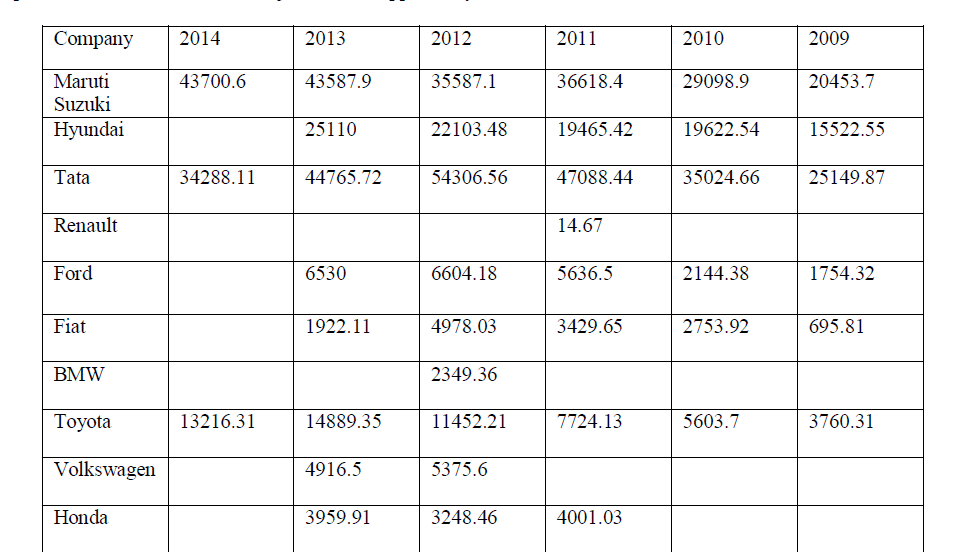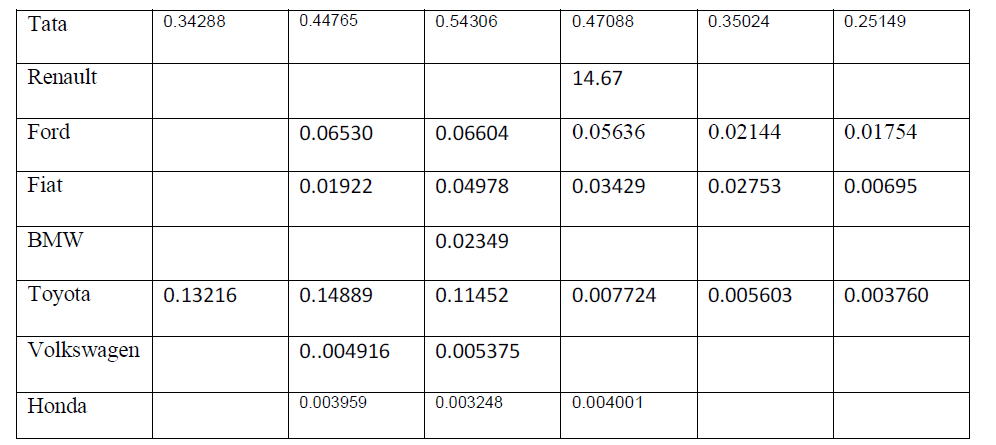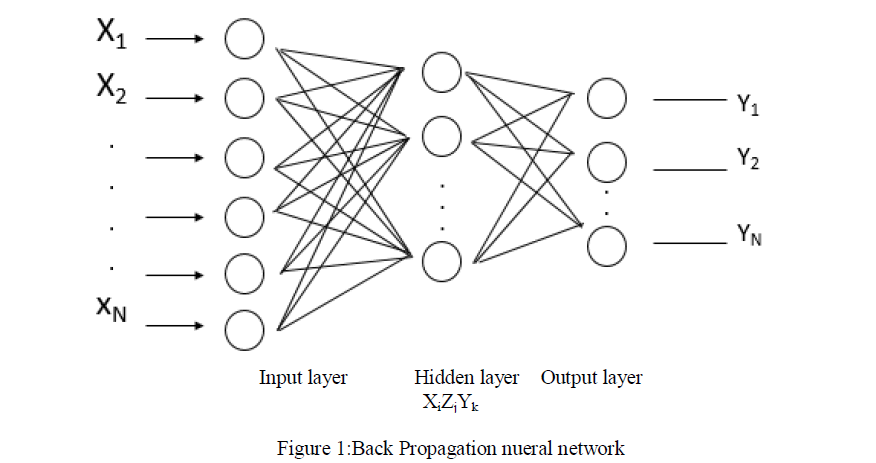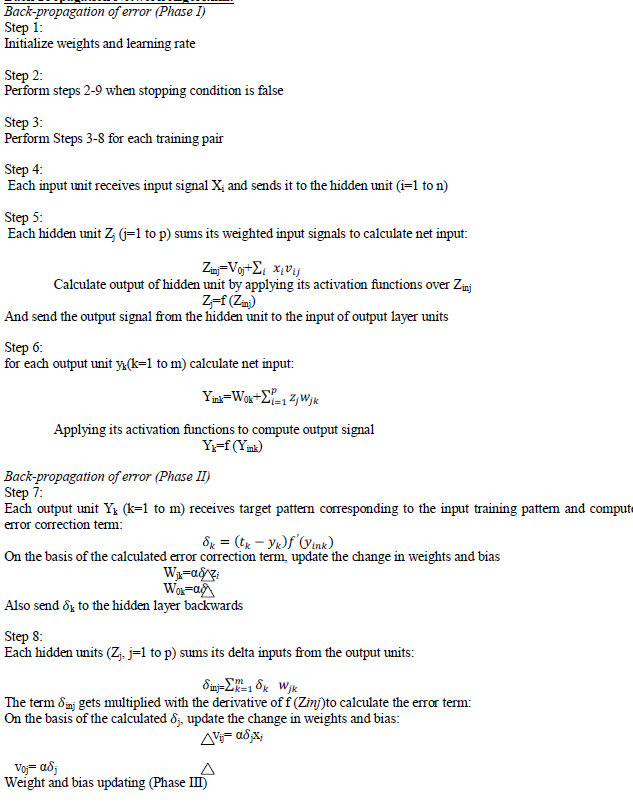ISSN ONLINE(2320-9801) PRINT (2320-9798)
ISSN ONLINE(2320-9801) PRINT (2320-9798)
| Jewel Murel D’Souza, Sheik Sana Begam, Santhosh Rebello Department of Information Technology, AIMIT, Mangalore, India |
| Related article at Pubmed, Scholar Google |
Visit for more related articles at International Journal of Innovative Research in Computer and Communication Engineering
Predictive analytics is the branch of the advanced analytics, which encompasses a variety of statistical techniques from modeling, machine learning, statistics, and data mining that analyze current and historical facts to make predictions about unknown future events. Soft Computing will fit the predictive analytics using neural networks in a very efficient way by replacing all the other methods and produce forecasts as accurate as or better than those available from other statistical methods. Indian automobile industry has gone tremendous changein terms of sales, customer expectation and challenges.A quick decision making and a positive movetowards change is required as the market scenario can be highly dynamic and can cause change without giving much time to respond.This paper aims at providing a proposed neural network solution that can be used to predict the future sales on the base of historical data using Back Propagation algorithm. Especially we aim at finding which automobile company will be on a high scale of sales as per the customer’s capacity and desire. This forecasting helps firms to take strategic decisions to achieve their goals.
KEYWORDS |
| Predictive analytics, SoftComputing, forecasting, Back propagation. |
I. INTRODUCTION |
| Predictive analytics encompasses a variety of statistical techniques from modeling, machinelearning, and data mining that analyze current and historical facts in order to determine patterns and predict about future outcome and trends. Predictive analytics does not tell you what will happen in the future. It forecasts what might happen in the future with an acceptable level of reliability, in order to better understand customers, products and partners and to identify potential risks and opportunities for a company. Often the unknown event of interest is in the future, but predictive analytics can be applied to any type of unknown whether it be in the past, present or future. |
| Soft Computing is a mechanism by which we give a feasible solution to a problem. It is tolerant of imprecision, uncertainty, partial truth, and approximation. In effect, the role model for soft computing is the human mind. Soft computing is used when we don't have enough information about the problem itself. These kinds of problems originate in the human mind with all its doubts, subjectivity and emotions. Soft Computing is a term used in computer science to refer to problems whose solutions are unpredictable, uncertain and between 0 and 1. Neural Networks, including neural computing is one of the principle constituents of soft computing. Neuralnetworks are nonlinear sophisticated modeling techniques that are applied to problems of prediction, classification. |
| In Neural networks the exact nature of the relationship between inputs and output is not known. A key feature of neural networks is that they learn the relationship between inputs and output through training. There are three types of training in neural networks used by different networks, supervised and unsupervised training, reinforcement learning, with supervised being the most common one. Some examples of neural network training techniques are back propagation, quick propagation. |
II. AUTOMOBILE SALES IN INDIA AND PROBLEMS IN SALES FORECASTING |
| The automobile industry is one of the core and vibrant industries of the Indian economy. The automobile industry is the largest industry in the world. Some call it the 'industry of industries'. With the huge number of new automobiles rolling out each year, on Indian roads, the industry is set to grow on a very high scale. Since it has the most leading product in the manufacturing sector, it can be said as the driver of the economic growth. The silent entry of the automobile industry in India was made in the nineteenth century. The industry accounts for 22 per cent of the country's manufacturing gross domestic product (GDP) which comprises passenger cars, two-wheelers, three-wheelers and commercial vehicles and is currently the seventh-largest in the world with an average annual production of 17.5 million vehicles, of which 2.3 million are exported. The Indian car industry has undergone tremendous change and has witnessed a phenomenal growth in recent times in terms of innovative designs, concepts and technology which therefore has attracted many global automotive players. |
| Increase in the paying capacity of the consumers which has led to an increase market demand has been a great benefit for the industry. The Indian car companies in like Toyota, Hyundai, Maruti Suzuki, and Ford are doing extremely well with great success along with other players such as M&M and Hindustan Motors are devising new techniques to accelerate growth. India is soon becoming a hub for car manufacturers not only to sell their cars but to setup manufacturing units. In April 2014, passenger car sales stood at 1,786,899 units while utility vehicles sales stood at 525,942 units, as per data from Society of Indian Mobile Manufacturers (SIAM). |
| Depending on the demand for the product the price fluctuates. The possibility of constant price for an automobile for a period of time is also high. The condition of the overall economy is still a primary determinant of general sales volume. Therefore having a sales forecast on the automobile industry will sure help firms to take strategic decisions to have a solid growth in the Indian automobile industry by taking cautious measures. This paper aims at providing a proposed neural network solution that can be used to predict the future sales on the base of historical data using Back Propagation algorithm. |
| There are countless issues, problems, and considerations in forecasting for new product. Understanding what a sales forecast is and what is designed to do is very important. A sales forecast is an educated guess of future performance based on sales and expected market conditions. The value of the forecast is that we can predict and prepare for the future objectively. The objective is to review the past, be focused in the present and follow the trends of the past and present to predict the future.Typically due to things that are out of our control, it is very difficult to forecast precisely. Mathematically, however, it is very possible to forecast sales with accuracy. The following are few of the major events that will affect the sales forecast: Seasonality, the economy, politics, fashion changes, average household income, demographic changes, and production requirements.It also includes: |
| A)Lack of Sales History |
| Sales forecast are based upon what the company has been able to achieve in the past. Early stage companies do not have significant revenue history to rely on and it is difficult to accurately forecast what sales might be without a track record. |
| B)Difficulty Forecasting the Industry and Competition |
| You never know how your industry sales would be in the next year. Whether the new competitors would come in and take away your sales. In this case sales forecasting would be a tedious job. |
| C) Customer Behavior is hard to Predict |
| The customers may not find your marketing campaign convincing compared to the other competitors. The customers taste may differ at any point of time. |
| D) Wrong Predictions |
| The problems faced by every company is that markets are unpredictable. This issue may cause the company’s Sales fall down to a greater extent. |
III. SURVEY OF HISTORICAL RESULTS |
| As a test data we selected some of the fast growing Indian automobile industries secondary sales data through web browsing. We especially aimed at collecting the sales of 10 automobile industries based on the yearly sales basis. The data collected was present in crores.The data varied year by year which caused rise and fall in company’s sale. |
| It was found that even though few of the companies lagged behind, the next year there was tremendous change in sales which brought growth for the companies. It was difficult to collect data for few companies as they recently emerged in Indian Automobile Industry but still made a great impact in the automobile sales. This variation and changes in sales shows how much faster the Indian Automobile Industry is growing in today’s era. This project how solid the industry will grow in next few years but will have a cautious growth due to improved affordability, the rise in incomes and unpredictable market. This will be just another opportunity for the Indian market. |
 |
| The conversion of sales data present in crores as inputs was done as follows: |
| ïÃâ÷ The data equal to and greater than10, 000 crores was converted as input with sales amount followed by the decimal point. |
| ïÃâ÷ Data less than 10,000 and greater than equal to 1000 was converted as input with a zero’s succeedingthe decimal point followed by the sales amount. |
| ïÃâ÷ Data below 1000 was converted as input with two zero’s succeeding the decimal point followed by the sales amount.. |
 |
 |
IV. FRAMEWORK FOR PREDICTING ANALYTICS ON SALES FORECAST USING BACK PROPAGATION NETWORK |
| A sales forecast predicts the value of sales over a period of time. It becomes the basis of marketing mix and sales planning. Sales forecasting is crucial because without a proper sales forecast a company cannot program to attain the desired sales and marketing objectives. It is based on a number of assumptions regardingcustomer and competitor behavior as well as the market environment, and therefore, its reliability dependsupon a number of uncertain parameters. There are several topologies possible for artificial neural networks. Among which the Back Propagation neural network is commonly used. The back propagation (BP) neural network algorithm is a multi-layer feed forward network where input signals go forward, errors are calculated from respected outputs and these errors are sent to previous layers for weight adjustment. |
 |
Back Propagation Network Algorithm: |
 |
 |
V. LIMITATIONS |
| Sales forecasting if done incorrectly then the business will waste capital used for buying components for the products. The market is constantly changing this may affect the organization. Generally the assessment made from theses prediction give an approximation value but not the details. |
VI. FUTURE STUDY |
| This approach is able to determine the relationship between the historical data supplied to the system during the training phase and on that basis make automobile sales prediction for the future. |
References |
|